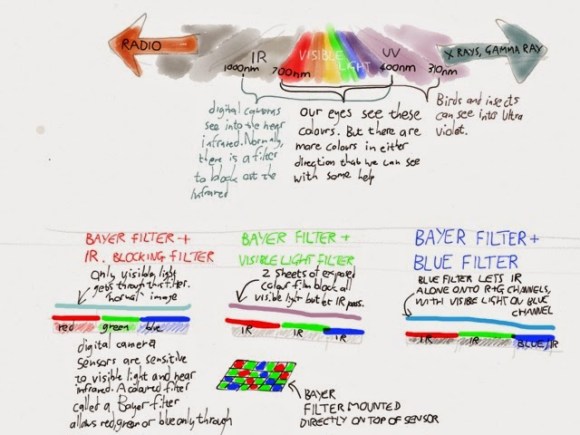For [Peter Le Roux’] first “real” electronics project, he decided to make a camera based off the venerable Raspberry Pi platform. But he didn’t just want a regular camera, he wanted something that could shoot in near IR wave lengths…
It’s a well-known fact that you can remove the IR blocking filter from most cameras to create a quasi IR camera hack – heck, that hack has been around nearly as long as we have! The problem is even if you let the IR light into the camera’s sensor, you still get all the other light unless you have some kind of filter. There are different ways of doing this, so [Peter] decided to do them all with an adjustable wheel to flip through all the different filters.
He designed the case after the PiBow enclosure – you can see our full Pi Case Roundup here – and had it all laser cut out of wood. Stick around after the break to see a nice explanation of the light spectrum and the various filters [Peter] uses.

Now if only it was this easy to hack a camera for Predator vision…















And you can use it to monitor plant growth,
http://publiclab.org/wiki/near-infrared-camera
* “spectra” :-)
I like the idea of using analog camera film for the IR only filter. Totally transparent to IR light (for projectors) and because it was unexposed it is a totally black negative that blocks all visible light.
I wonder if the black part from an xray film would work the same way? Time to sacrifice an old camera and do some experimenting.
Why sacrifice an old camera, it is just the film, you walk into a shop buy a roll and ask them to sent it off for development (but with no prints). Explain to the guy behind the counter what you are doing and to make a note that even though the roll was not exposed you still want it processed.
I fooled around with this a bit back in the day – usually the (then easily found) ends of film worked fine, which means that per [Truth], sacrificing a roll *after pulling it out and exposing it to light* (to turn it dark) works pretty well. If you just develop it without exposing it to light first, you’ll get a transparent sheet of plastic that won’t help you at all. Or you can get an “opaque” #87 filter from a photo shop/Ebay/China – might be cheaper these days than mucking around with roll film. B&H lists a 3″ x 3″ #87 polyester filter for $14.
You have to exspose it to make it black. That is why it is called a negative… area exsposed to light is black and un exsposed is clear/white